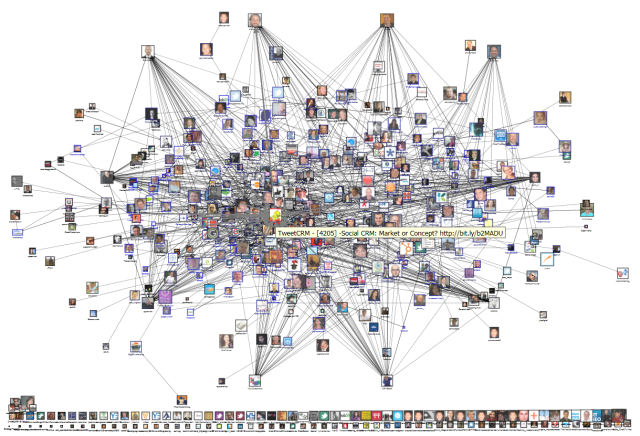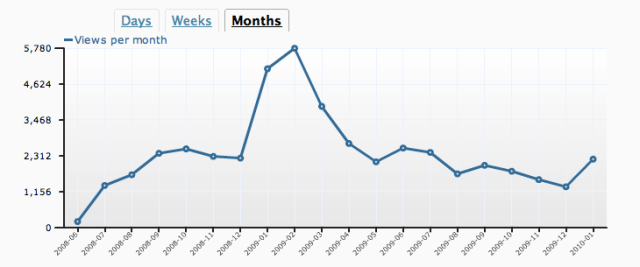Twitter has been around long enough for some regular Twitterers to have changed jobs. If so, what happens to your Twitter followers when you change jobs?
Do all those who once followed you for your insights on one particular subject stick with you if your new job is in a different area? Or can you build up sufficient rapport with your followers so that they stick with you because of the quality of your conversation with your Twitter community? Or do they just follow so many people, the odd irrelevant one really does not matter?
I’ve asked Adrian Monck, Daniel Pearce and Edward Welsh, who’ve changed jobs recently, what happened to their followers. All three appear to think pretty much the same: as long as your Tweets are of sufficient interest and your approach to followers is not too self-conscious, followers remain remarkably loyal.
And if you’ve changed your job recently, do answer the questions yourself. There are instructions at the end of this post.
 Adrian Monck is Managing Director, Communications and Media, for the World Economic Forum, the organisation which brings world leaders together to “shape global, regional and industry agendas”.
Adrian Monck is Managing Director, Communications and Media, for the World Economic Forum, the organisation which brings world leaders together to “shape global, regional and industry agendas”.
Previously he was Professor of Journalism at City University, London (see his Linkedin profile).
He Tweets @amonck.
When did you start Tweeting?
Twice. First time I just didn’t get it and gave up. 2nd time was in 2008, and since then I haven’t really stopped – which is terrible for my ratios.
How many followers did you have just before you changed jobs
I’d love to say I took notice but I didn’t really… and moving to an organisation with 1.5m followers, it all seemed like small beer. Besides, I never really pursued a follower strategy for my personal account beyond reciprocity with people who seemed real.
Did the followers belong to a defined community and, if so, what?
Couldn’t say. Mine are all sorts. Journos, media types of all shapes and sizes, and since I was followed by Michelle Malkin I get some rather wacky US conservatives. What they hope to find, goodness only knows – but life’s rich tapestry etc.
Has the subject of your Tweets changed since you changed jobs?
I have less time, so they’re a little less diverse. I’m mainly a link tweeter which makes me an anti-social social networker…
Did you change the people you followed and, if so, by what percentage?
Sorry didn’t do the math or maths…
Did you see any fall off in the number of your followers when you changed job?
Modest increases but probably percentage growth in my followers lower than twitter as a whole.
If not, why do you think it is that your original community still follows you?
It’s not really a community, more a pond. I just float on the surface with the rest of the erm… let’s call us “pond-life”!
 Daniel Pearce is the editor of Travel Trade Gazette (TTG), a weekly newspaper for the UK travel industry. Previously he was managing editor of The Publican, a weekly newspaper for the UK pub and drinks industry (see his Linkedin profile).
Daniel Pearce is the editor of Travel Trade Gazette (TTG), a weekly newspaper for the UK travel industry. Previously he was managing editor of The Publican, a weekly newspaper for the UK pub and drinks industry (see his Linkedin profile).
He Tweets @DanielPearce.
When did you start Tweeting?
15 June, 2007. I was managing editor of the Publican, a business-to-business magazine for the licensed UK pub and drinks industry. After the first initial Tweet or two, I did not think I had time for such “frivolities”.
It took some cajoling at the beginning of 2009 to realise the full extent of the opportunity and to start Tweeting in earnest.
How many followers did you have just before you changed jobs?
I had 550 followers from across the pub and drinks industry, as well as some media followers (all professional, no friends – that’s not what Twitter is about for me).
Did the followers belong to a defined community and, if so, what?
Followers from across the pub and drinks industry, as well as some media followers (no friends – that’s not what Twitter is about for me).
Has the subject of your Tweets changed since you changed jobs?
Yes, I was mainly commenting on pubs and drinks, linking followers through to stories on thepublican.com. Now I mainly comment on travel issues and link to ttglive.com.
Did you change the people you followed and, if so, by what percentage?
I spent an evening, before I started the new job, going through the people I was following in the drinks and pub world and assiduously unfollowing them. I then, as assiduously, started following people in the travel industry.
Did you see any fall off in the number of your followers when you changed job?
I kept almost all my followers in the pub and drinks world and then gained a whole lot of new followers from the travel industry brining me up to 960 followers.
If not, why do you think it is that your original community still follows you?
I’ve always peppered the professional stuff with personal comments about my day and opinions on general stuff (ie the recent UK election). It’s not just a ‘hard sell’ of my professional life. And I think this sort of engaging content is the reason that I have held on to just about every one of my followers.
 Edward Welsh is the Director of Corporate Affairs at the Association of Train Operating Companies (ATOC), the body which represents train operating companies in the UK. Previously he was programme director, media and campaigns, at the Local Government Association (see his Linkedin profile). Edward wrote about his experience of Tweeting in a guest post on this blog.
Edward Welsh is the Director of Corporate Affairs at the Association of Train Operating Companies (ATOC), the body which represents train operating companies in the UK. Previously he was programme director, media and campaigns, at the Local Government Association (see his Linkedin profile). Edward wrote about his experience of Tweeting in a guest post on this blog.
He Tweets @EdwardWelsh.
When did you start Tweeting?
2 December, 2008.
How many followers did you have just before you changed jobs
About 420.
Did the followers belong to a defined community and, if so, what?
Most were people involved in local government politics, journalists and other PR people.
Has the subject of your Tweets changed since you changed jobs?
Yes, because I have switched from local government to the railways. But many of the Tweets are similar (i.e. chronicling my visits to the BBC to accompany my chief executive for an interview on the Today programme).
Did you change the people you followed and, if so, by what percentage?
I have gradually reduced the number of people who I follow from local government but probably by only around 20%.
Did you see any fall off in the number of your followers when you changed job?
To my surprise, no.
If not, why do you think it is that your original community still follows you?
I hope that they continue to follow me because, while my core subject matter is about the railways and my organisation, I Tweet about many other issues which they consider interesting.
************************************************************************
 AND WHAT ABOUT YOU? Have you changed your job recently? Do you Tweet? Copy and paste the questions below into the comment section of this post and let others know you experience.
AND WHAT ABOUT YOU? Have you changed your job recently? Do you Tweet? Copy and paste the questions below into the comment section of this post and let others know you experience.
When did you start Tweeting?
How many followers did you have just before you changed jobs
Did the followers belong to a defined community and, if so, what?
Has the subject of your Tweets changed since you changed jobs?
Did you change the people you followed and, if so, by what percentage?
Did you see any fall off in the number of your followers when you changed job?
If not, why do you think it is that your original community still follows you?
Illustration: NodeXL Twitter Network Graphs: Social CRM by Marc_Smith.











 Companies are not using social media just to interact better with their customers or clients. They are increasingly doing it to engage with their own staff, according to research released last week by
Companies are not using social media just to interact better with their customers or clients. They are increasingly doing it to engage with their own staff, according to research released last week by 


